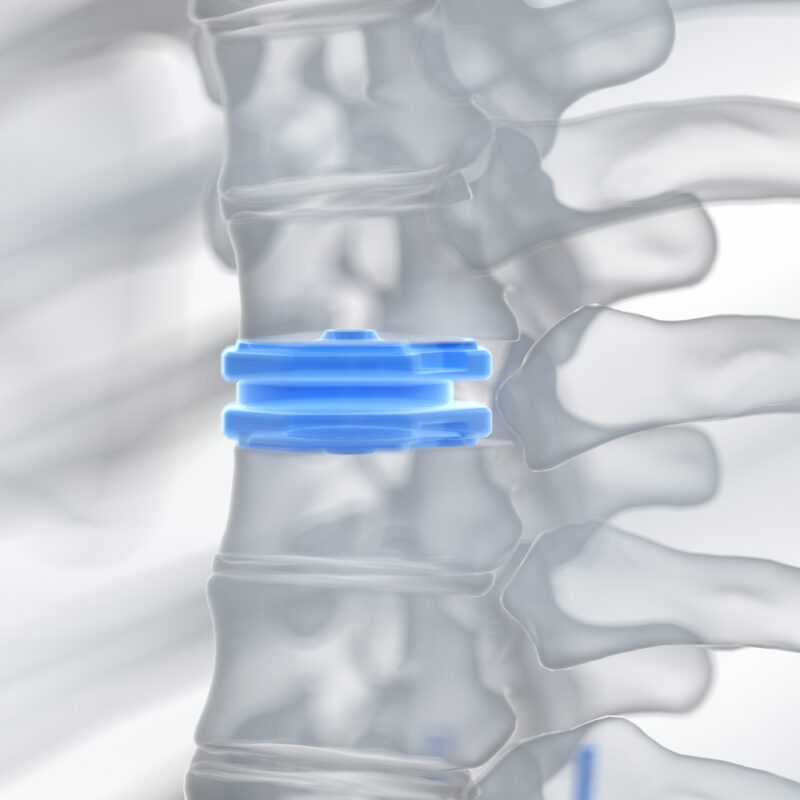Why Would Someone Need An Artificial Disc Replacement?
In the human body, our neck connects our head to the rest of our bodies. Our neck holds various vital structures responsible for breathing, speaking, and swallowing. The cervical spine also gives our heads a wide range of motion. The decay of any disc in your spine can drastically affect your daily life. When this happens a disc replacement might be necessary. Damage to your spinal discs can cause nerve compression problems and reduce neck motion. The compression of your neck can cause numbness, severe pain, and neck weakness. The damaged disc can be repaired by replacing that disc with a functioning replacement.
What Can I Expect From An Artificial Disc Replacement Procedure?
Luckily, technology has produced various options for replacing the cervical disc. An Artificial Disc Replacement (ADR) is normally used to treat a deteriorated disc that is compressing the spinal cord and/or spinal nerve roots. An ADR allows for a movement similar to normal spinal motion. This medical procedure involves a small incision made on the front of the neck.
Approaching the neck from the front allows you to prevent the pain associated with interfering with the larger neck muscles in the back of the cervical spine. Because of this technique, this procedure usually causes only mild discomfort, compared to more invasive procedures. Once the damaged disc can be seen, it is removed in order to liberate the pressure on the spinal cord and nerve roots. Following the withdrawal of the decayed disc, the artificial disc is placed between the two vertebrae to return to the spine’s normal structure and movement.
What Is The Difference Between The ACDF and ADR Procedures?
Anterior Cervical Discectomy and Fusion (ACDF) is a popular spinal surgery performed for the treatment of disorders in the spine. Traditionally, ACDF is used in cases where disc replacement is necessary. This surgery is also approached through the front of the cervical spine to remove the damaged disc. The difference in procedures lies in the second part of the procedure. During the second part of the procedure, the decayed disc is replaced with a bone graft or implants to merge them with the bones in our spine so there is only one long bone.
Why Is The Modern Artificial Disc Replacement Procedure A Better Choice For Some Patients?
Recently, ADR has been becoming increasingly popular due to its special benefits:
- ADR provides a more natural motion range.
- ADR minimizes the probability that the neighboring vertebrae will evolve degenerative disc disease.
- ADR eliminates the need for a bone graft.
Compared to the ADR procedure, an ACDF also has a longer recovery time. While ADR is a more recent procedure than ACDF, studies have shown that it is an effective method of eliminating pain resulting from the spinal cord or nerve compression. Its relief lasts for years.
To determine what procedure is right for you, Comprehensive Spine Care in Westwood, NJ has a team ready to evaluate your symptoms. This group of surgeons has over two decades of experience and multiple offices in the greater New York area to treat issues that affect the spine. Call 201-634-1811 to schedule an appointment.
What Can You Expect After The Procedure?
Every patient has a different recovery period. Some patients may go home the same day of the procedure and return to their daily routine only a week after having undergone the procedure. Other patients might have to stay in the hospital for monitoring. For these patients, it can take about 2 months to pass before they can return to their lifestyle. Physical therapy is a mandatory part of the recovery period to make sure that flexibility and strength are recovered as well.










